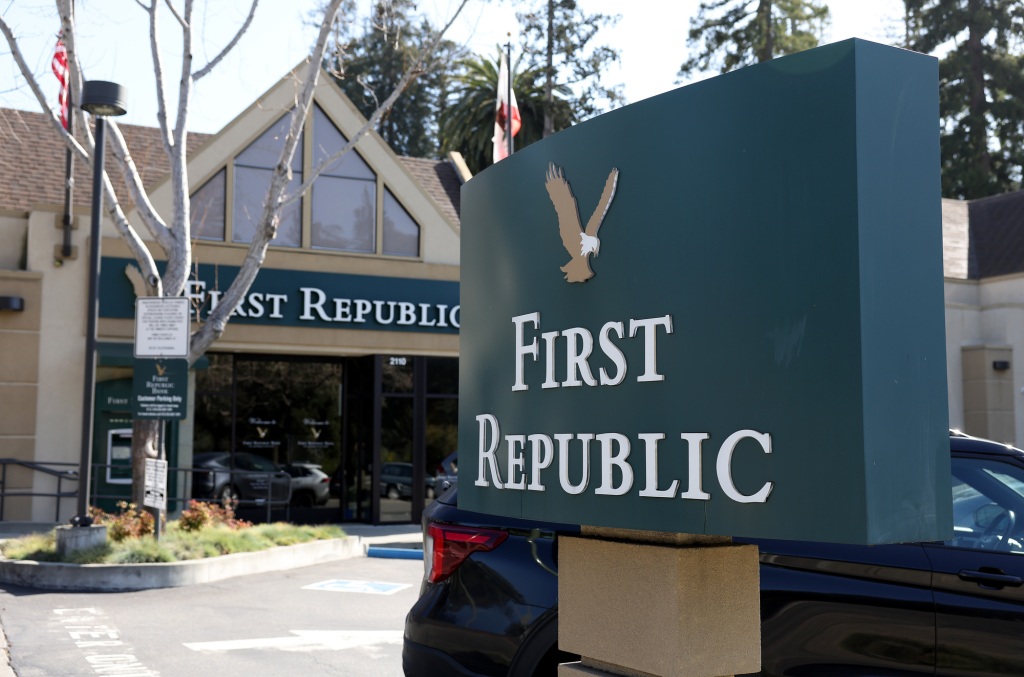Naafeh Dhillon had just left the holiday light show at Saks Fifth Avenue in New York when he learned that all of his bank accounts had mysteriously gone dark.
After the show, Dhillon, his girlfriend and some friends escaped the cold and had dinner at a French bistro — but when it came time to pay the check, his credit card was declined. His debit card was rejected next. It had to be some sort of mistake, he figured, because he had plenty of money in his account.
But when he returned home that mid-December evening and called his bank, Chase, a customer representative delivered the unexpected news: The bank had dumped him as a customer. The rep said he should have received a letter in the mail but couldn’t say much more than what was in the notice — “unexpected activity” had led to the closing of his accounts.
“I received no kind of warning or red flag,” said Dhillon, 28, who had started banking with Chase after visiting its marketing booth at New York University, which he attended after arriving in 2013 from Pakistan. “It was just out of the blue.”
Since he wasn’t given a specific reason for the closure, he couldn’t disprove whatever raised suspicions in the first place. “It was almost like getting a scarlet letter,” he added.
A rise in suspicious activity reports
With fraudulent activity on the rise and exploding during the pandemic, some banks are taking an even harder look at their customers’ transactions — and closing their accounts when they feel that it’s necessary.
Because financial institutions have a front-row seat for watching the country’s cash flow, financial institutions are obligated to alert regulators and law enforcement through a Suspicious Activity Report if there’s irregular behavior that they cannot easily explain.
Not all reports lead to account closures, and not all closures lead to reports. But if banks fail to report suspicious activity and regulators discover problematic transactions later, banks and their compliance employees are potentially on the hook for all manner of penalties.
“So all their incentives are toward closing accounts,” according to an explanation of SARs on the website of the Bank Policy Institute, a research and advocacy organization that represents mid- and large-size banks.
Financial institutions filed 1.4 million of these SARs in 2021, according to a bureau of the Treasury Department. That was nearly 70% higher than the 839,314 filed in 2014.
Besides the overall rise in fraudulent activity, several factors could be behind the increase in filings — more alerts from government officials tipping off banks to specific activities, increasingly sophisticated technologies to detect them and more regulatory scrutiny.
Yet most of the time, the customers are probably innocent. A 2018 study from the Bank Policy Institute found that a median of just 4% of 640,000 SARs from a sample of large banks warranted a follow-up from law enforcement, according to the research, which examined 16 million alerts.
“It is the bank’s version of ‘If you see something, say something,’” said Sharon Cohen Levin, a former chief of the money-laundering and asset forfeiture unit in the U.S. Attorney’s Office for the Southern District of New York, and currently a partner at Sullivan & Cromwell, which advises financial institutions on compliance with the anti-money-laundering laws.
Vague explanations
Dhillon, who lives in Brooklyn, had a job interview the day after his cards were declined at the restaurant. Convinced that his debit card should work — after all, the Chase mobile app reflected his balance — he tried to use it again to pay for freshly printed copies of his resume. After his card was declined again, he called the bank from the printing shop. Chase only reiterated what it had told him the night before.
The next morning, he went to his Chase branch. He left with a cashier’s check for his account balance but without any satisfying answers.
Later that evening, he finally unearthed the bank’s Dear John letter: “Financial institutions have an obligation to know our customers and monitor transactions,” it said. “After careful consideration, we decided to close your accounts because of unexpected activity on this or another Chase account,” according to the Nov. 15 letter, which said the accounts would close Dec. 14.
Still frustrated with such a vague explanation, Dhillon called the number on the letter. After some prodding, the representative told him that the bank’s global security and investigation team had ultimately made the decision. Would the representative transfer him to that department? Nope.
“I have sifted through my account activity for the past few months and have failed to see or detect any kind of unusual activity,” Dhillon said. “This entire ordeal has been painful and difficult.”
Was it one of those far-fetched cases of mistaken identity? His family, which had paid for his tuition and living expenses, sent him money from Pakistan regularly — via wire transfers, Western Union and, recently, a family friend in New York. “This has been going on since the day I arrived in New York, and no red flag has ever been raised by Chase,” he said.
After The New York Times called Chase on his behalf, he received another call from the bank, which had opened an investigation. A representative later told him that they “couldn’t confirm any wrongdoing” on his end. Chase said that when it needed to close an account, it tried to give customers enough time to move to another institution. “Closing an account is often a last resort, after other options have been considered, to protect our customers and the bank,” a spokesperson at JPMorgan Chase & Co. said.
A delicate balance
Individual financial institutions must answer to a bureau of the Treasury Department called the Financial Crimes Enforcement Network, or FinCEN. Its job is to safeguard the financial system against criminal activity, including money laundering and terrorism financing.
Its basic mission: Follow the money. And the banks play a central role in collecting that data.
Banks can close a customer’s account for any reason, at any time, a point that is buried in the fine print of its customer agreements. When they dump an account, it’s usually because they’re trying to protect the institution (or the customer) from a potential fraud. It usually starts with an algorithm programmed to detect certain patterns or behavior. A customer’s transactions may have tripped a wire — perhaps by repeatedly making cash deposits just below $10,000, a tactic known as structuring, since anything above that amount is usually flagged. Or maybe the customer had a transaction with another party that was deemed suspicious (and in some cases, the banks don’t want the customer to be a victim).
After the warning bells ring, financial institutions have a special (human) team that reviews the situation to see if there is a reasonable explanation.
These employees may decide to close the account and cut their losses — and they may file a SAR to the federal government. They may also do just one or the other — or neither, after speaking to the customer.
SARs are largely kept under wraps. Customer service representatives might not know if such a report was filed (or anything about its contents), which may be why it can be hard for them to explain account closures to customers.
“It is held to a high level of confidentiality, and it is a crime to disclose that a SAR has been filed,” Cohen Levin said.
In some cases, banks may be completely upfront about why they’ve decided to shutter a customer’s account. The account may have been inactive for too long, or a consumer may have been generating too many overdrafts.
It’s a delicate balance. Banks want to avoid being overly aggressive, which could disenfranchise immigrant communities and others who may have difficulty getting traditional bank accounts. They’re also supposed to be in the business of customer satisfaction. Besides regulators and customers, banks need to answer to their own shareholders — and they need enough satisfied customers with profitable accounts to make them happy.
Still, sudden account closures are intensely disruptive. And people subject to them seem to be saying so more often. According to the Consumer Financial Protection Bureau, at least twice as many aggrieved account holders complained about checking- and savings-account closures last year as they did in 2017. Last year, the bureau ordered Wells Fargo to pay $160 million in remediation to more than 1 million people for the “substantial injury” it caused through its aggressive freezing and closing of bank accounts from 2011-16.
Filing complaints
Not all flagged activity leads to an account closure. In Todd Zolecki’s case, his bank didn’t shutter his account, but it did shut him out from access to his own money.
After taking a loan from his 401(k) in mid-January, he tried to transfer the money into a new high-yield savings account at Synchrony Bank. Once the money landed, he called Synchrony to ask if he could transfer some of it — a sum larger than $10,000 — to his checking account at TD Bank. Not a problem, the bank told him.
But once he tried, he received a notice that the transfer had been suspended and that his account was frozen. He immediately called Synchrony, which wouldn’t provide any more details.
“They said your account has been suspended for further review,” said Zolecki, 47, who lives in Media, Pennsylvania. Why? “We can’t tell you that. The only thing we can tell you is it can take up to 60 days for this review.”
In another email, he was told that his transfer had been rejected because TD had trouble processing the request; but when he called TD, he said, the bank had no record of it. He logged into his Synchrony account daily to check the status.
After speaking with an employer-provided legal service, Zolecki filed complaints Jan. 20 with the Consumer Financial Protection Bureau and the Office of the Comptroller of the Currency, which regulates the country’s largest banks.
He received a call from Synchrony less than a week after that, and the representative said the bank had noticed there were login attempts from out of state. Those attempts were made by Zolecki, a writer for Major League Baseball, who was on a business trip. The representative later said his account had originally been flagged because he tried to make an immediate transfer.
“But there was never any acknowledgment that a Synchrony rep told me I would have no problem making that transfer in the first place,” he said, adding that he would simply have waited. Within minutes of his speaking to the rep, on Jan. 27, the account was reactivated.
In a statement, Synchrony said it was committed to improving its “customer experiences, improving fraud detection and creating seamless identity authentication,” adding that it has “invested in technology and expertise to help with an evolving set of threats.”
A banking backup plan
As with Dhillon, Justin Martin’s first indication that his financial life was suddenly frozen came when he tried to pay for food. Everything was shut — his Chase credit and debit cards, plus his checking account.
The phone reps couldn’t explain it. Branch personnel were sympathetic but offered no further insight. Martin, who works for a financial services company himself, worried about his credit and his ability to open other accounts. But he also feared for his livelihood.
“We were going through an acquisition, and they were going to do a big background check,” he said. “Was this going to jeopardize my employment? When I have to work with my legal department, their risk appetite is basically zero.” (No problems emerged during the background check.)
Thankfully, Martin already had another bank account.
“The big thing I’ve learned here, and I think it’s applicable to a lot of places in our lives — say, if you’re investing money — is that you diversify,” he said. “If all of your credit or money is wrapped up in one bank, it can only benefit them.”
The diversification strategy can also be useful if you worry that banks might not like your crypto trading or OnlyFans side hustle and shut everything down, no questions asked.
“If there is a way to separate that account from the one for your light bill and everything else, have that ‘B’ account open so your mortgage doesn’t go delinquent,” said Clayton Legear, CEO of Merchants & Marine Bank in Pascagoula, Mississippi.
Account holders can certainly try to ask questions ahead of time about account activity that might raise suspicions. The ability to show up at a branch and look someone in the eye can help. This is especially true if your financial life is taking a turn that might look fishy to a stranger working at a bank who must answer to a blaring algorithmic siren.
“When things change, make sure your bank is aware of that so they don’t get caught out of the blue and have you pinged as a teacher, but now you have a used-car business and absolutely have every reason to have lots of cash transactions,” Legear said. “As much as you can, treat your banking account like a relationship.”
That advice is cold comfort to Martin. After the Times asked about his situation with Chase, the bank reached out to him. Once again, however, it wouldn’t — or couldn’t — tell him anything useful about why it had kicked him to the curb in 2020.
“It was like, ‘Hey, I just want you to know that I still don’t want to date you anymore, and I’m never going to date you,’” he said, recounting the conversation. “‘And you can call us, but we won’t provide you any closure even three years later.’”
This was amusing to Martin, because a different part of the bank is in frequent touch — to try to hire him. He understands that its compliance department doesn’t talk to recruiting. Plus, he figured that if he was actually interested in a job there — which he is not — whatever it was that caused the bank to not accept his paychecks anymore would make it not want to write any to him, either.
More recently, however, he has begun to joke about the possibility of fixing its problems. As a user-experience designer, he wonders about systems that could keep so many innocent people from tripping the fraud wires at the bank.
“I am still offended, but for the right price, I can not be offended any longer,” he said. “It’s just a hiccup in our relationship if that’s what they really want.”
This article originally appeared in The New York Times.









